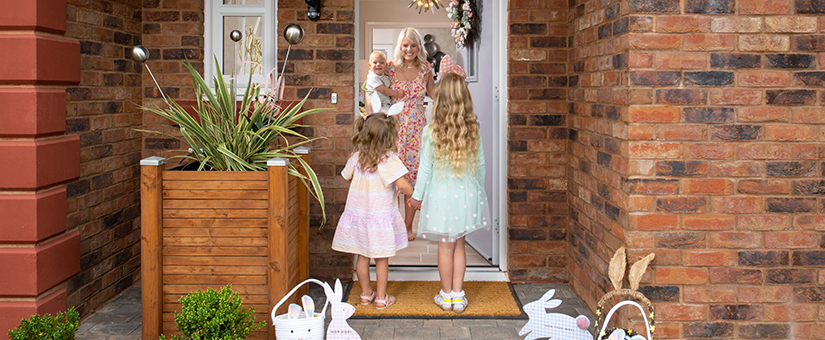
Story Homes – D’Urton Manor
Looking after your plants
Move plants to the shade – It may seem obvious but move your potted plants out of the sun as much as possible. If you don’t have any shady corners, use shade netting to keep them cool.
Give more attention to recently established plants as they need the most water to help them grow, but already established plants can be self sufficient throughout a heatwave.
Prune less – cutting away parts of your plants can promote new growth but in the summer they can get vulnerable and suffer from all that care and attention. Instead just let them grow freely and only cut away parts that are dead, infested or decaying.
Get some mulch
Putting a layer of bark or compost mulch down throughout your borders will provide a damp layer of insulation that will lock in well-needed moisture. It is particularly important to cover any surface roots to stop them from burning and to be extra generous around vegetables which require a lot of water. And don’t forget your pots, too.
Only water at specific times
Water the your garden in early morning, evening or even night-time, to reduce water wastage from evaporation. Avoid the hottest part of the day because you could end up scalding your plants.
Use the right water… and recycle! Using water from the water butt is the most natural way to water the garden. Did you know that you can also recycle bath water, once it has cooled, so as not to waste water unnecessarily during a dry spell? Just make sure you don’t water anything you would eat without cooking first – like lettuce, for example. Stick to inedibles.
Dealing with Leatherjackets or Larvae
Leatherjackets are a natural occurrence in the English Garden, but unfortunately their larval stages can interrupt crops and lawns. They are soil-dwelling larves or flies known as crane flies or daddy-longlegs and emerge from the soil during late summer.
Leatherjackets can be a problem for gardeners as they feed on the roots of grass causing plants to die. This can also result in large patches of bare grass in the garden.
The easiest way to spot leatherjackets in your garden is to come across the long grey/brown grubs when digging. Signs of leatherjackets can also include birds pecking at your grass or patches of grass coming away without any roots.
Here are some tips on how to deal with Leatherjackets in your garden:
- Try using a nematode treatment that you can apply to affected areas after rain or a session with the sprinkler. Nematodes are microscopic worms, and certain species predate the leatherjackets. Nematodes are natural and some will be in your lawn already, but applying more ensure they kill the grubs.
- As a preventive measure, apply nematodes in September to early October against leatherjackets. Nematodes should be applied as soon as possible after purchase, following the suppliers’ instructions for use. It may be necessary to water the lawn before and after application to ensure the soil is sufficiently moist for nematode activity and survival.
Warranty
Warranty
Be aware of what your warranty will and will not cover – please remember that it is your responsibility to maintain your garden, and that turf would not be covered as a fault under your warranty if it was in a suitable condition when it was laid.
Our warranty does not cover wear and tear, neglect and failure to do the appropriate maintenance. We also cannot cover storms and severe weather conditions, flooding and changes in the water-table level and these should be insured by the homeowner personally.
*Please note that Story Homes has placed a hold on the laying of all turf due to the hot weather, ground conditions and risk of a hosepipe ban. If you are due to move into your new home in the very near future, your sales executive will be in touch to update you.
Many issues which arise with lawns can be avoided through consistent homeowner maintenance, so we strongly recommend following the below advice. Useful information is also provided by the Royal Horticultural Society via their website.










